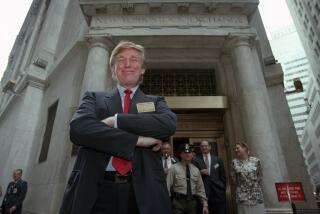Lincoln, through a N.Y. lens
NEW YORK — Abraham Lincoln visited New York City only five times, and only once as president, yet the growing 19th century metropolis played a central role in burnishing his enduring public image.
That’s the point of a new exhibition, “Lincoln and New York,” that opened Friday at the New York Historical Society on Manhattan’s Upper West Side to celebrate the bicentennial of Lincoln’s birth.
The exhibition runs through March 25.
It begins with Lincoln’s historic speech at the Cooper Union in 1860 and the iconic Mathew Brady photograph taken the same day, more than two months before he won the Republican presidential nomination.
The events led Lincoln later to state: “Brady and the Cooper Union speech made me president.”
It concludes with his 1865 funeral procession down Broadway, an event attended by hundreds of thousands of mourners. Along the way, it traces New Yorkers’ varied reactions to Lincoln, from veneration to vilification.
There are many other Lincoln bicentennial exhibitions across the nation, but the one thing they all miss, said Harold Holzer, the chief historian for the exhibition, “is how Lincoln achieved the status he achieved, and how did it morph into something approaching secular sainthood over a period of only four years.”
Filling six galleries, the exhibition shows how New York City’s place as the center of media, commerce and finance enabled it to transform Lincoln’s image “from the debater and jokester to a serious, learned, dignified politician fully capable of taking the country through what became the secession crisis,” Holzer said.
During the 1860s, New York had 174 daily, weekly and monthly newspapers, all wielding huge influence over the emerging and changing political scene.
“Because of the power of the New York media and the influence of New York politicians, Lincoln’s New York visits transformed him from a prairie politician, and an ungainly one, into a serious alternative for the nomination of the presidency” in 1860, said Holzer, the author of numerous books on Lincoln, including “The Lincoln Image” and “Lincoln at Cooper Union.”
Brady, the nation’s most famous photographer of the period, worked in Lower Manhattan, as did the leading engravers, printmakers, photographers and journalists -- all churning out editorial cartoons, political commentary and caricatures on Lincoln.
Examples include those by famous lithographer Currier & Ives, which produced both beautiful portraits of Lincoln and vicious anti-Lincoln cartoons.
Many of the cartoons were racist and offensive. “You see that Lincoln is derided from many sides,” said Kathleen Hulser, the museum’s public historian, who was on the exhibition’s curatorial team.
To help viewers understand some of the illustrations, a cartoon decoder -- a pull-down screen that overlays the cartoon -- identifies the figures and explains what their comments mean.
Also featured in the exhibit: a video reenactment of the Cooper Union speech with actor Sam Waterston as Lincoln; a copy of the original speech in which Lincoln discusses his views on slavery; the lectern he used; and funeral photographs and memorabilia.
The exhibition also includes the most famous letter to the editor -- Lincoln’s reply to New York Tribune editor Horace Greeley’s blistering editorial accusing the president of not issuing the Emancipation Proclamation soon enough.
In the end, Lincoln’s influence on New York also was significant, said Hulser. For example, she said, the state provided more men and material to the Union war effort than any other, despite the city’s sometimes racist and violent resistance to Lincoln’s policies.
More to Read
The biggest entertainment stories
Get our big stories about Hollywood, film, television, music, arts, culture and more right in your inbox as soon as they publish.
You may occasionally receive promotional content from the Los Angeles Times.









